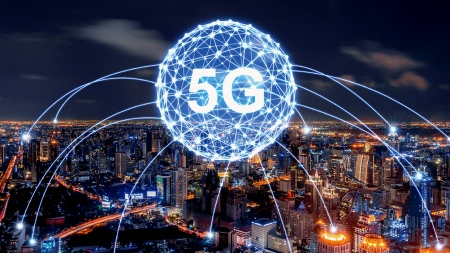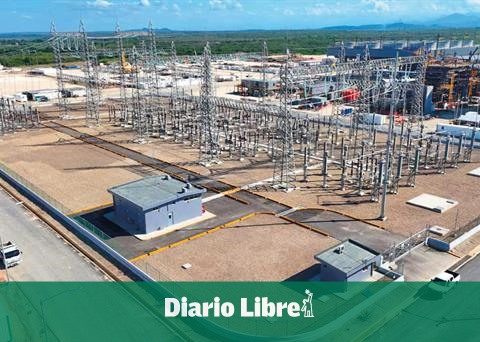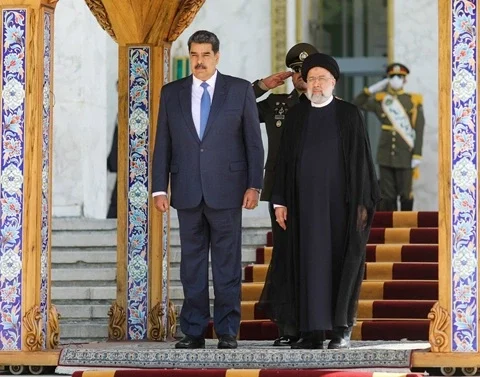The Government, through the National Communications Entity, resolved new advances in the face of the necessary regulations for the implementation of 5G communications technology in Argentinawith the approval of the General Regulation of the service, the allocation of the spectrum bands that will be tendered in the first half of next year, and the terms that companies have that must migrate to other frequencies.
The Enacom board of directors approved this week the General Regulation of the Reliable and Intelligent Telecommunications Service (STeFi), which establishes the general rules for the new services that will arrive with 5G technology and upcoming developments, and which are characterized by low latency, that is to say, a connection that will allow the realization of services in real time.
The approved regulation (STeFI) does not replace the regulation of Advanced Mobile Communications Services, which is in force for the provision of services with 2G, 3G and 4G technology.
From Enacom they specified that the new regulation that establishes technical conditions to categorize communications as reliable and intelligent “are the ground for 5G technology and future evolutions.”

They specified that 5G is “a fixed and mobile service, given the characteristics and possible use cases for this technology, unlike its predecessors whose use translates into mobile services.”
The great differential of 5G focuses on “low latency”, which in the Regulation approved by Enacom establishes that the reliable and intelligent service must have a “latency of less than 15 milliseconds in the access network”.
This level of communication closer to real time will allow the expansion of solutions such as remote surgery.
This level of communication closer to real time will allow the expansion of solutions such as remote surgery, since a surgeon will be able to remotely control a robot that carries out an operation in real time; or self-driving vehicles, which require “dialogue” with other cars, with road sensors and traffic signals.
On this last case the millisecond of latency can mean the difference between a safe journey and an accident.
The low latency allows a practically instantaneous response to any device connected to the network, but also 5G technology has the capacity to connect a minimum of one million devices per square kilometer and in fact it is expected to boost the communication between machines called the Internet of things (IoT for its acronym in English).

Although it is still hard to see it as usual, in addition to smartphones there is a variety of equipment for daily use that is connected to the Internet.
Watches and medical bracelets are the most recognized, but perimeter alarms, surveillance cameras and GPS installed in the car are also added.; as well as a variety of sensors that generate alerts about soil moisture, the vibration of a bridge, and the full range of uses for robots such as excavating machines in the oil and gas and mining industries; and equipment to defuse explosives.
All these possibilities, together with the automation of industrial plants, require more reliable communications than the current ones.
The technology must “support users moving at speeds of up to 500 kilometers per hour” and have the ability to “interoperate with other fixed and mobile networks.”
The Regulation approved by Enacom, in addition to latency of less than 15 milliseconds, establishes as requirements “theoretical and reproducible peak speeds in the laboratory for 100 MHz TDD bandwidth channels with Massive MIMO antenna technology: For the 2 Gbps downlink and 150 Mbps for the uplink”.
The technology must also “support users moving with speeds of up to 500 kilometers per hour” and have the ability to “interoperate with other fixed and mobile networks.”
The head of the Professional Council of Telecommunications Engineering (Copitec), Miguel Pesado, stressed the importance of the regulation that “takes parameters from the international standard of the 3GPP group of the International Telecommunications Union.”
Enacom established the deadlines for companies that are operating in the 3.5 Ghtz band to migrate to other frequencies, in Resolution 2386.
“Everything is in compatibility with the international standard,” said Pesado in dialogue with Télam, to add that “you have to look at compatibility issues with other services that already exist and with other uses that have been given to the 3.5 gigahertz band “.
In that sense, Enacom established the deadlines for companies that are operating in the 3.5 Ghtz band to migrate to other frequencies, in Resolution 2386.
From the private sector, the companies that provide mobile communications services expect the bidding documents to prioritize investment over payment for the license to use the spectrum, since it is estimated that 5G requires between 5 and 10 more antennas to efficiently cover the same areas that today have 4G service.
Also the companies that do not provide mobile communications services, but are ICT providers and have laid fiber optic infrastructure, most of them national SMEs, hope to be able to sit at the 5G table with the operators and regulators, since the terrestrial infrastructure It is a fundamental part of the expansion of new technology.
Investment in 5G infrastructure is 4% of the income of Latin American operators
Investment in infrastructure to deploy 5G technology in Latin America reaches 4% of the operators’ income, according to data from an international consultancy that located in US$ 2,066 million in contributions made this year by companies in the region.
Before a query from Télam, IDC analysts indicated that “investment in 5G infrastructure in Latin America in 2022 will be 2,066 million dollars”, which represents 5% of world investment.
They remarked that “Current deployments -in the region- are concentrated in Brazil, Chile and Mexico”.
In Argentina, the Government identified the bands for the use of 5G, and the Ministry of Economy assured that The bidding for the radio spectrum will be held in the first half of 2023.
“On average, in the Asia Pacific (APAC) region, operators are investing up to 14% of their revenues in 5G infrastructure, in contrast to North America, which invests 6% of their revenues, and in Latin America, operators with 5G deployments are investing in 5G infrastructure on average 4% of their income”.
Without considering the cost of the spectrum, or the licenses required by the operators, the accumulated investment in the last two years worldwide just to deploy 5G “exceeds 55,000 million dollars.”
They specified that “5G infrastructure investment represents 68% of total mobile infrastructure investment”given that companies globally still invest in maintaining technologies such as 2G, and expanding others such as 3G and 4G.
According to the 5G Americas association, there are 1.1 billion 5G connections globally and the projection is that it will reach 5.9 billion by the end of 2027.
They specified that “on average, connections to 5G networks have doubled every year since the commercial introduction of these networks at the end of 2018, having totaled 922 million connections at the end of the third quarter of 2022“, data provided by the consultancy Omdia.
Among the 75 countries reporting 5G connections, the latest data from Omdia shows that 433 million 5G connections were added globally between the third quarter of 2021 and the same period this year.
“In total, this represents a sequential quarterly growth of 14.4%806 million in the second quarter of this year to 921 million in the third quarter,” they said in a statement.
The entity’s report identifies North America as the leader in adoption of 5G wireless connectionswith a total of 108 million 5g connections and 506 million LTE accounts -another communication technology that was deployed to accelerate the move from 3G to 4G- at the end of the third quarter of this year.
While for Latin America and the Caribbean, 5G Americas expects “4g LTE to continue strong” until “the end of 2022.”
They specified that at the end of the third quarter there were 530 million 4g connections, which represents a quarterly growth of 2.14%, with the addition of 11 million new subscriptions.
“Latin America and the Caribbean are projected to have 22 million 5G connections by the end of 2022, and 399 million by 2027.”
The vice president of Latin America and the Caribbean of 5G Americas, José Otero, said that “with more than 500 million connections, 4G LTE is the base of mobile wireless connectivity throughout the Latin American region.”
“However, Looking to the future, 5G will start to play an increasingly important role. for the citizens of the region as deployments and connections increase significantly,” he said.


















